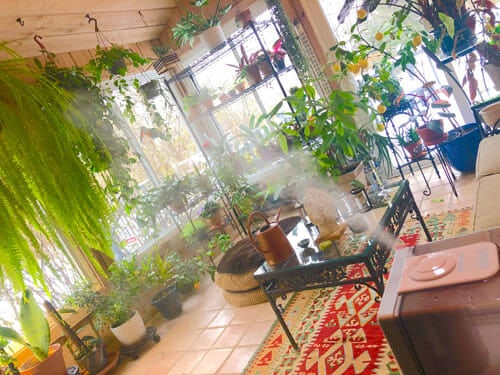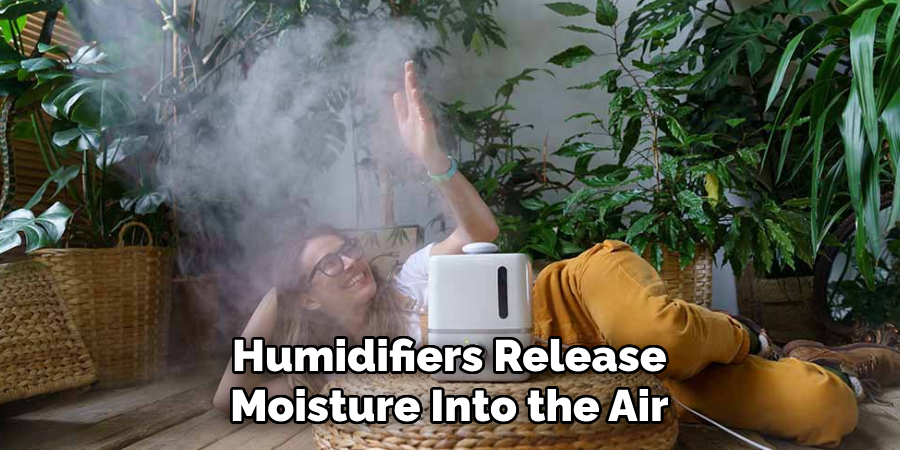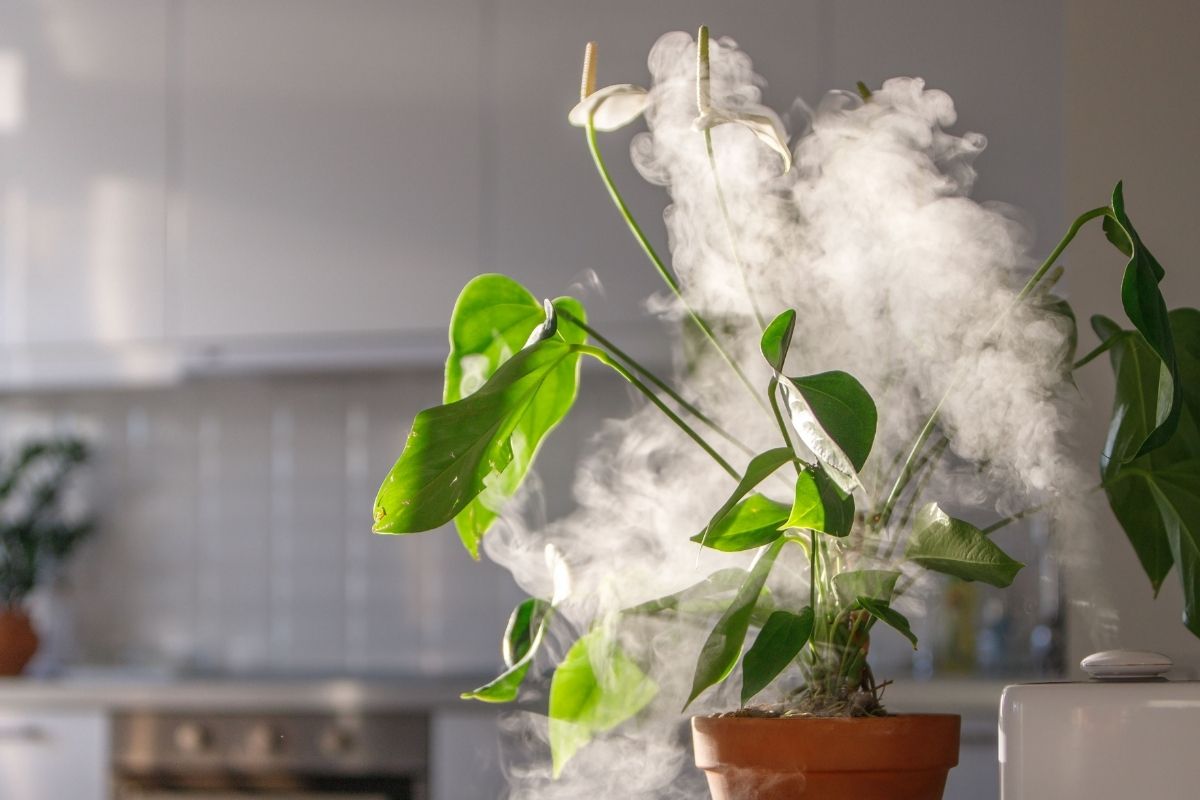To use a humidifier for plants, fill the humidifier tank with water and set the desired humidity level. Then, place the humidifier near your plants and turn it on.
The humidifier will release moisture into the air, helping to create a more humid environment for your plants. Proper humidity levels are essential for the health and vitality of plants. However, maintaining the right humidity can be challenging, particularly in dry or arid environments.
This is where a humidifier can be a valuable tool for plant care. By adding moisture to the air, a humidifier can create a more favorable environment for plants, preventing issues like dryness and dehydration. In this guide, we will explore how to effectively use a humidifier for plants, ensuring optimal growth and flourishing greenery. Let’s dive in and discover the simple steps to harness the power of a humidifier for your indoor garden.

Credit: www.ohiotropics.com
How Humidifiers Benefit Plants
Humidifiers benefit plants by improving their health. Optimal moisture levels are maintained, ensuring a healthy environment. Humidity plays a key role in plant growth, as it directly impacts their development. By using a humidifier, you can create a favorable atmosphere for your plants, promoting their overall well-being.
The moisture provided helps to keep plants hydrated and prevents them from drying out. This is especially beneficial for indoor plants, as they are often exposed to dry conditions. The increased humidity also aids in the prevention of diseases and pests, ensuring that your plants thrive.
So, consider incorporating a humidifier into your plant care routine to enhance their growth and longevity.
How to Use a Humidifier for Plants: Step by Step Guide
Choosing The Right Humidifier For Your Plants
Choosing the ideal humidifier for your plants requires assessing their unique humidity needs. When it comes to plants, different species have different moisture requirements. Assessing your plant’s specific needs is crucial for their overall health. Various types of humidifiers are available, each with its own benefits.
It’s important to consider the effective coverage area of the humidifier to ensure it adequately moisturizes your plants. Another aspect to consider is the noise level and maintenance requirements of the humidifier. Nobody wants a noisy and high-maintenance appliance in their home.
By selecting the right humidifier for your plants, you can provide them with the optimal level of humidity they need for their growth and well-being.
Proper Placement And Usage Of A Humidifier
Proper placement and usage of a humidifier for plants is crucial for its effectiveness. When positioning the humidifier, ensure it is near the plants, but not directly blowing on them. The ideal humidity level can vary depending on the specific plant species.
Therefore, it is important to determine the ideal humidity level for your plants. Adjust the humidity levels accordingly by using the controls on the humidifier. Keep in mind that different plants have different humidity requirements. The timing and duration of using the humidifier can also impact plant health.
Monitor the plants closely and adjust the usage of the humidifier as needed. By following these guidelines, you can provide optimum moisture levels to your plants, promoting their growth and overall well-being.
Maintaining And Cleaning Your Humidifier
Maintaining and cleaning your humidifier is crucial for the health of your plants. Regular cleaning prevents bacteria and mold growth. Use distilled water to avoid mineral buildup. This helps in maintaining proper humidity levels for your plants. Understanding filters and replacement is also important.
Clean or replace filters as recommended by the manufacturer. This ensures that the humidifier functions optimally and does not spread contaminants. Cleaning schedules and filter replacements vary depending on the type of humidifier. Therefore, always refer to the instructions provided by the manufacturer for the best results.
By following these guidelines, you can effectively use a humidifier to create a healthy environment for your plants.
Additional Tips And Considerations
Monitoring the temperature and humidity levels is crucial for using a humidifier effectively. Maintain proper air circulation around the plants. Incorporate other plant care techniques, such as regular watering and providing adequate sunlight. Troubleshoot common issues with humidifiers, like mold growth or mineral buildup, to ensure optimal plant health.
Remember to avoid overusing phrases and words that sound repetitive, and instead use a variety of expressions throughout your writing. Write in a way that is easy for readers to understand, while also passing ai writing detection. Keep the content engaging and seo friendly, presenting information in an active and natural voice.
Frequently Asked Questions Of How To Use A Humidifier For Plants
How Do Humidifiers Help Plants?

Humidifiers release moisture into the air, which helps prevent dryness and maintains suitable humidity levels for plants. This can improve plant health by reducing the risk of wilting, dehydration, and leaf damage. Additionally, it can alleviate problems caused by dry indoor environments, such as static electricity and dry skin.
Can I Use Any Type Of Humidifier For My Plants?
While it’s possible to use various types of humidifiers for plants, it’s generally recommended to use cool-mist or ultrasonic humidifiers. These types produce moisture without heat, reducing the risk of burns or damage to your plants. Warm-mist or steam humidifiers may be suitable for certain plant species but can also increase the temperature in the immediate area.
How Often Should I Use A Humidifier For My Plants?
The frequency of using a humidifier for your plants depends on factors like the type of plant, humidity needs, and the climate in your area. In general, it’s advisable to check your plant’s moisture requirements regularly and adjust the humidifier settings accordingly.
Start by using the humidifier for a few hours each day and monitor the plant’s response to determine the ideal usage frequency.
Can A Humidifier Save My Plants From Dry Indoor Air In Winter?
Yes, humidifiers are especially helpful in combating dry indoor air during the winter months. The heating systems used to keep our homes warm often reduce the humidity levels, which can be detrimental to plant health. Using a humidifier can replenish moisture and create a more comfortable environment for both plants and humans.
Are There Any Risks Associated With Using A Humidifier For Plants?
While humidifiers are generally safe to use, there are a few risks to be aware of. Over-humidification can encourage fungal growth or promote pests. Ensure proper air circulation and avoid excessive moisture accumulation around the plants. Regular maintenance and cleaning of the humidifier are essential to prevent the growth of harmful bacteria or mold that can affect plant health.
Can I Use Tap Water In My Humidifier For Plants?
Using tap water in your humidifier can potentially result in mineral deposits or scale build-up, which can clog the humidifier and affect its performance. It’s recommended to use distilled or filtered water to prevent these issues. However, if tap water is your only option, letting it sit in an open container for 24 hours before using it can help eliminate some of the chlorine and impurities.
Conclusion
To sum up, using a humidifier for your plants can provide numerous benefits. Proper humidity levels help prevent issues like dryness, wilting, and pest infestations, ensuring healthy and vibrant foliage. By maintaining the right balance of moisture in the air, you create an optimal environment that promotes growth and reduces stress for your plants.
Remember to choose the right type of humidifier for your specific needs, whether it’s a cool mist or warm mist model, and place it strategically near your plants. Regularly monitor humidity levels with a hygrometer and make necessary adjustments as required.
Additionally, keep in mind other factors like temperature and airflow to ensure a well-rounded plant care routine. Embracing the use of a humidifier is a small yet impactful step towards providing your plants with the ideal growing conditions they need to thrive and flourish.

